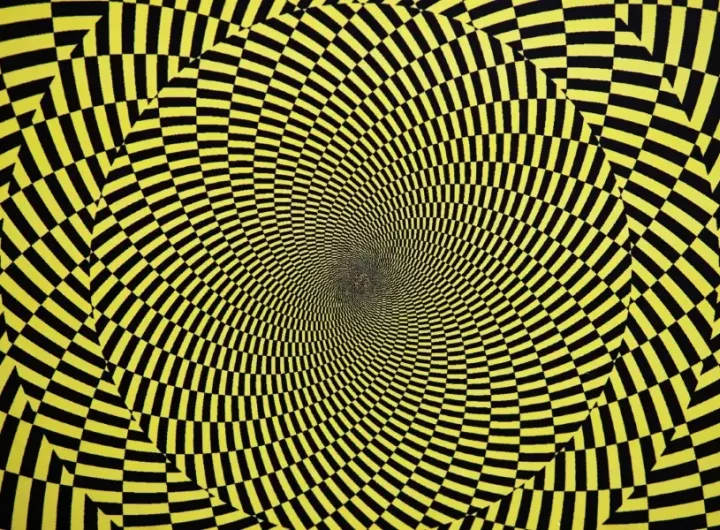
Now You See It... Where's Your Focus? – Part 2
It seems like a lifetime ago, but in fact it was only two years back: the viral Internet image known as “The Dress” which appeared to be blue-and-black striped to some people and white-and-gold striped to others. (Here’s the link, in case you’ve forgotten.) So what’s this got to do with parenting? Well, it’s about what we often call the “aha moment”, and it’s something I’m lucky enough to see happen all the time.
ARE YOU SEEING WHAT'S REALLY THERE?
Our brain is an amazing piece of work, and scientists learn more about how it works every day. But it also has limitations. It’s designed to see patterns, recognise things that are familiar, and make quick decisions if necessary. This can be very useful, but it also means we sometimes get stuck in certain patterns of thinking, and in parenting this can happen very easily. I wrote a little bit more about how our instincts sometimes lead us down the wrong path in Part 1 of this blog.
The good news is, once someone’s learned to see things differently, it can open up a whole new way of doing things. These new ways can be so much easier and so much better, you start to wonder why you didn’t do them sooner!
NOW YOU SEE IT...
We can all think about times in our life when something’s explained to us in a new way, or we see something a certain way for the first time. It’s why optical illusions are so fascinating. Remember those pictures that were everywhere in the 1990s, where it looked like just a whole of lot of random colours, but then if you stared at it for long enough, you’d see a 3D shark, or a donut, or whatever?
THE MOMENT EVERYTHING CHANGES
When you could suddenly 'see' the hidden image for the first time, it was quite a thrill. And just like when you read your first sentence, rode a bike, or got the hang of using your smart phone, you have that sudden realisation that life as you know it is never the same again. The penny (or the mic) drops, and you find yourself thinking, “Ohhh, NOW I get it.”
If you want to get fancy about it, you can call it a paradigm shift, meaning your thinking is now based on a whole new framework.
WHEN PEOPLE DON’T WANT TO SEE
But sometimes, it can be hard to admit there’s a different way to see things. Coming back to that optical illusion idea, sometimes people will swear blind (if you’ll excuse the pun) that something simply isn’t possible, even when you can prove it to them. (Your eyes may tell you these two squares are a different colour, but when those same eyes tell you they AREN’T, your brain quickly goes into defensive mode. “That just can’t be right!”) In other words, change can be hard.
Understanding the positive parenting process can be a bit like that too. Sometimes, people want to fight the idea that it could work. It just seems like when parenting has been such a struggle for so long, it couldn’t possibly change that easily, just by doing things a bit differently.
YOU CAN’T FIGHT REALITY
What we usually see, though, is that even if someone’s a bit reluctant or unsure, they discover for themselves that these strategies really do work. (Because they’ve been developed over many years of research, that shouldn’t really be surprising, but there you are.) It feels like discovering some kind of magic, a secret. Then people get really excited – it’s really hard to describe how great that feels when you see it in action, but you can imagine.
Then, hopefully, another thing happens. It’s a bit like when you read more about an optical illusion and figure out how it works and what your brain was doing when it 'saw' something that wasn’t really true. You can now see it both ways: the old way, and the new way.
YOUR EYES ARE REALLY OPENED
When parents really start to understand the problems with coercive parenting, (using threats or harsh punishments to force kids to do something, instead of working on the relationship and building the child’s skills), they also understand more why the new approach works better. The same goes for parents who can see that maybe giving kids infinite freedom, no rules and no routines may have a downside. Being able to examine the whole situation from new angles is a really useful skill.
Sometimes, parents may feel guilty about how they’ve handled problems in the past. But just like when you’re given extra information that helps you figure out the optical illusion, it’s not about blame or feeling bad. It’s about learning and understanding new things – and also building on your successes. What are you doing that’s working well? What’s your child doing that’s positive and heading in the right direction? How can we build on those things? And how do we all, children and parents, learn new skills and work out for ourselves the best way to handle new challenges?
You have to admit, it’s kind of exciting to think about the possibilities. And the world may disagree on whether The Dress was blue & black or white & gold, but wanting to ensure parents are supported to enjoy family life and do a great job raising awesome kids is an issue where just about everyone can see eye-to-eye.